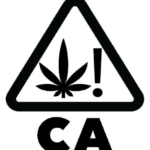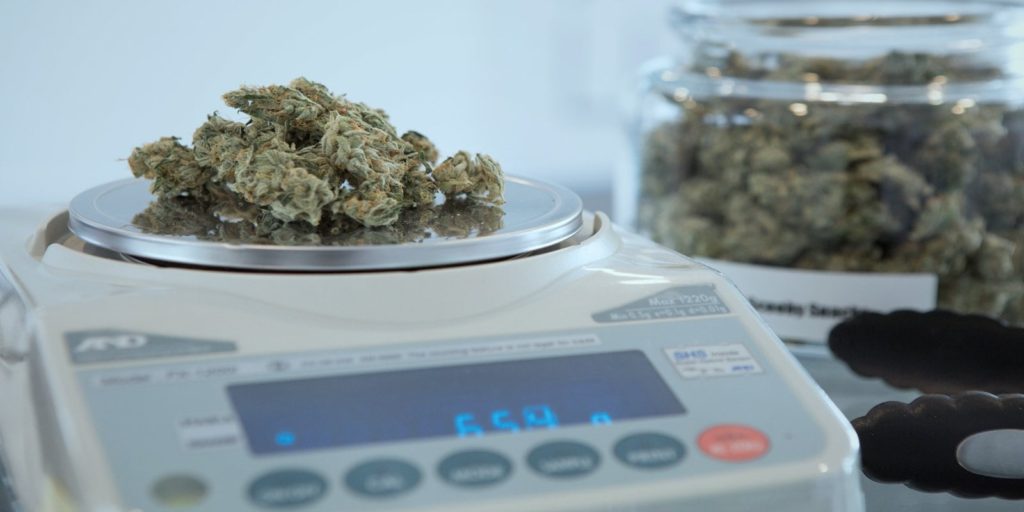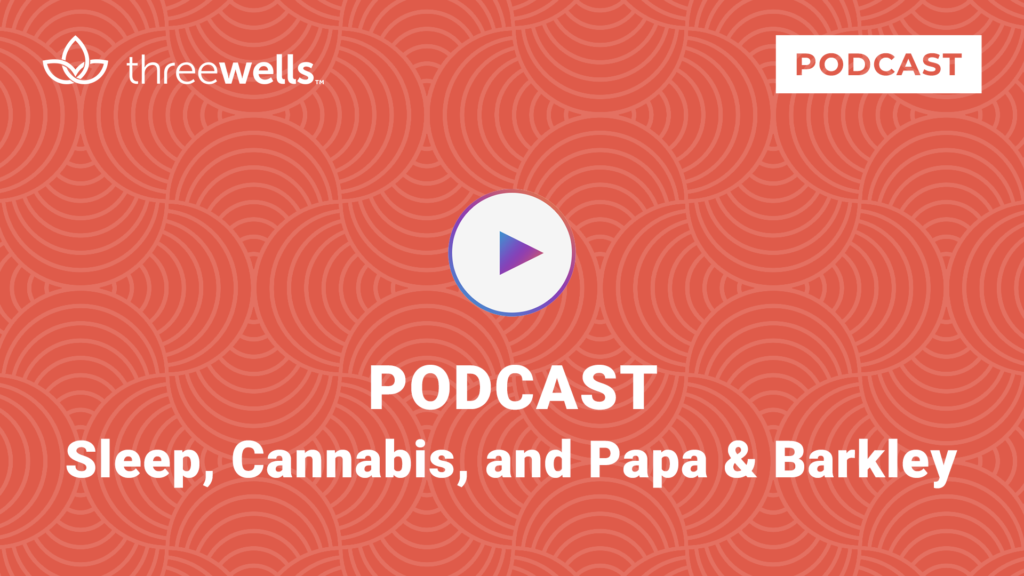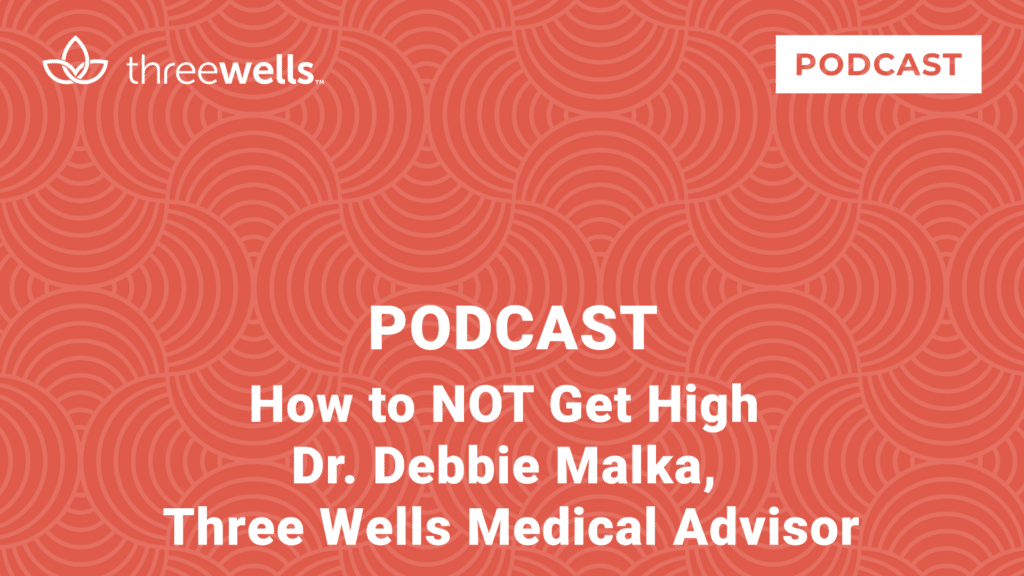Read Time: 4:00 Mins.
A growing number of adults across the nation use medical cannabis for its natural health and wellness benefits. But many would be surprised to learn that not all cannabis is created equally. Last Fall, Three Wells published its first article on why state-regulated cannabis testing in a laboratory is good for your health. When it comes to buying safe cannabis, testing matters because otherwise, you have no idea whether the cannabis you’re using contains heavy metals, pesticides, mold, or a whole host of other contaminants. It might not even be the strain you intended to buy. If you’re an adult using medical cannabis for pain, anxiety, depression, insomnia, or other conditions, what you’re putting in your body is just as important as why you’re doing so.
Why Buy Legal Medical Cannabis?

All legal retail cannabis products in California must have a label with the official testing symbol of approval. While testing requirements differ from state to state, testing for safe cannabis generally includes:
1. Heavy Metals. Traditional cannabis and hemp plants have a natural ability to absorb compounds found in the soil or water. Heavy metals occur naturally but may come from industrial sources near the grow, or in the soil or water used for indoor cultivation. California requires testing for arsenic, cadmium, lead, and mercury.
2. Residual Solvents. Cannabis products like oils and concentrates may use solvents (such as ethanol) during the creation process to separate and extract various cannabinoids in the cannabis plant. Testing determines the purity level to ensure any remaining solvent residue is within standardized limits. Remember, oils and concentrates are more potent than raw flower, which means that any contaminants are magnified as well.
3. Contamination/Pesticides. The cannabis is tested for banned chemical contaminants and pesticides that can be dangerous to your health. When heated, pesticides may emit dangerous chemical vapors, so be safe and buy legal cannabis.
4. Microbial Testing. Ingesting high levels of microorganisms such as E.coli, mold, fungus, bacteria, yeast, and other toxins can be unhealthy. While cannabis is a plant and some microbes are to be expected, some, like mycotoxins from mold, should not be ingested. Others need to be within acceptable limits just like all agricultural produce.
5. Cannabinoid, Potency, and Terpene Analysis. Labs check the test sample’s potency to determine the THC and CBD levels and other cannabinoids in the sample. It is critical for people to know the amount of THC in their purchase so they can make an informed decision about its effects. Some people require a strain with a high percentage of THC to treat their symptoms. In California, potency results must be included on the packaging label. Terpene content is also tested because terpenes determine the strain’s unique characteristics and its ability to help with a particular medical condition. Terpenes are found in all plants and determine the plant’s character, fragrance, and flavor.
Sometimes the farmer may be unaware that something unintended is happening on the farm, and testing allows them to take action to correct it going forward. If the tested cannabis fails any of the tests, the entire batch cannot be legally sold in licensed dispensaries. Unfortunately, this type of cannabis can still find a way to less expensive retail sales in the underground market of unlicensed dispensaries.
The Underground Market
Professional, ethical cultivators and farmers who grow safe, legal cannabis do so within the regulated system, yet the illegal, underground retail market continues to thrive. There are many reasons for this, but taxes are certainly a key factor. According to BDS Analytics, the costs to grow illegal and legal cannabis in California are about the same, averaging between $2.00 and $4.00 per gram. But when it comes to retail sales, average prices nearly double from $6.00 per gram for illegal sales to $11.00 for cannabis sold in a legal, licensed dispensary. In the end, you may save money by purchasing cannabis from an illegal dispensary, but at what cost to your health?
Untested Cannabis and the Costs to Your Health
Putting something unhealthy in your body runs contrary to the very idea of medical cannabis. This is especially true if you’re a mature adult using medical cannabis on a regular basis for a chronic medical condition. Unsafe cannabis not only reduces the intended health benefits, but it can harm you and the environment. An alarming 2018 study by the Integral Ecology Research Center discovered that the banned pesticide Carbofuran was found in 72 percent of illegal California grow sites last year, up from 15 percent in 2012. According to the study, one teaspoon is so powerful that it can kill a 300-pound bear. A prevailing theory is that Mexican drug cartels smuggle it into the U.S. for their illegal cannabis farms. It’s another reminder that when you purchase cannabis from an unlicensed dispensary, you might know the true source.
Pesticides aren’t the only problem as nature plays a role as well. When looking at buds, white patches or streaks may indicate a fungus, mold or mildew. This is not allowed under state testing regulations and it could be especially harmful if you’re allergic to mold or mildew. Do you really want to inhale or ingest them through an unlicensed tincture or edible product?
Tips to Spot an Illegal Cannabis Dispensary
Buying products in a licensed cannabis dispensary is good for your health. But honestly, it may be hard to tell if a dispensary is properly licensed, and sells products in compliance with state testing regulations. Here are some general tips:
- They don’t charge tax. Check your receipt for the tax breakdown (if any).
- Inconsistent operating hours.
- They don’t check your ID.
- Non-compliant packaging that is not re-sealable or child-proof.
- The packaging does not include the state’s compliance symbol (California).
- The staff can’t or won’t furnish the test results for the batch number on the label.
- The location and security personnel are questionable.
- People are consuming cannabis on the premises (there are limited exceptions).
- There is no license number on their advertising materials (California).
Sometimes it’s not easy for a consumer to know. According to the Los Angeles Police Department, there are over 500 illegal dispensaries in LA alone. Most are holdovers from the earlier collective model and may sell quality products, but it’s a risk. On a good note, most states which legalized medicinal cannabis have an online resource for checking the license status for compliant dispensaries.
The legal cannabis industry is still in its formative stages. Regulations and product safety standards will evolve, and it’s amazing how far we’ve come in a limited amount of time. When it comes to purchasing cannabis, play it safe and stick with high quality, tested cannabis flower and products purchased in a licensed dispensary. They may cost more upfront but the health risks of using untested, unsafe cannabis could be far more expensive.
John Ansimoore covers all things cannabis for Three Wells.




